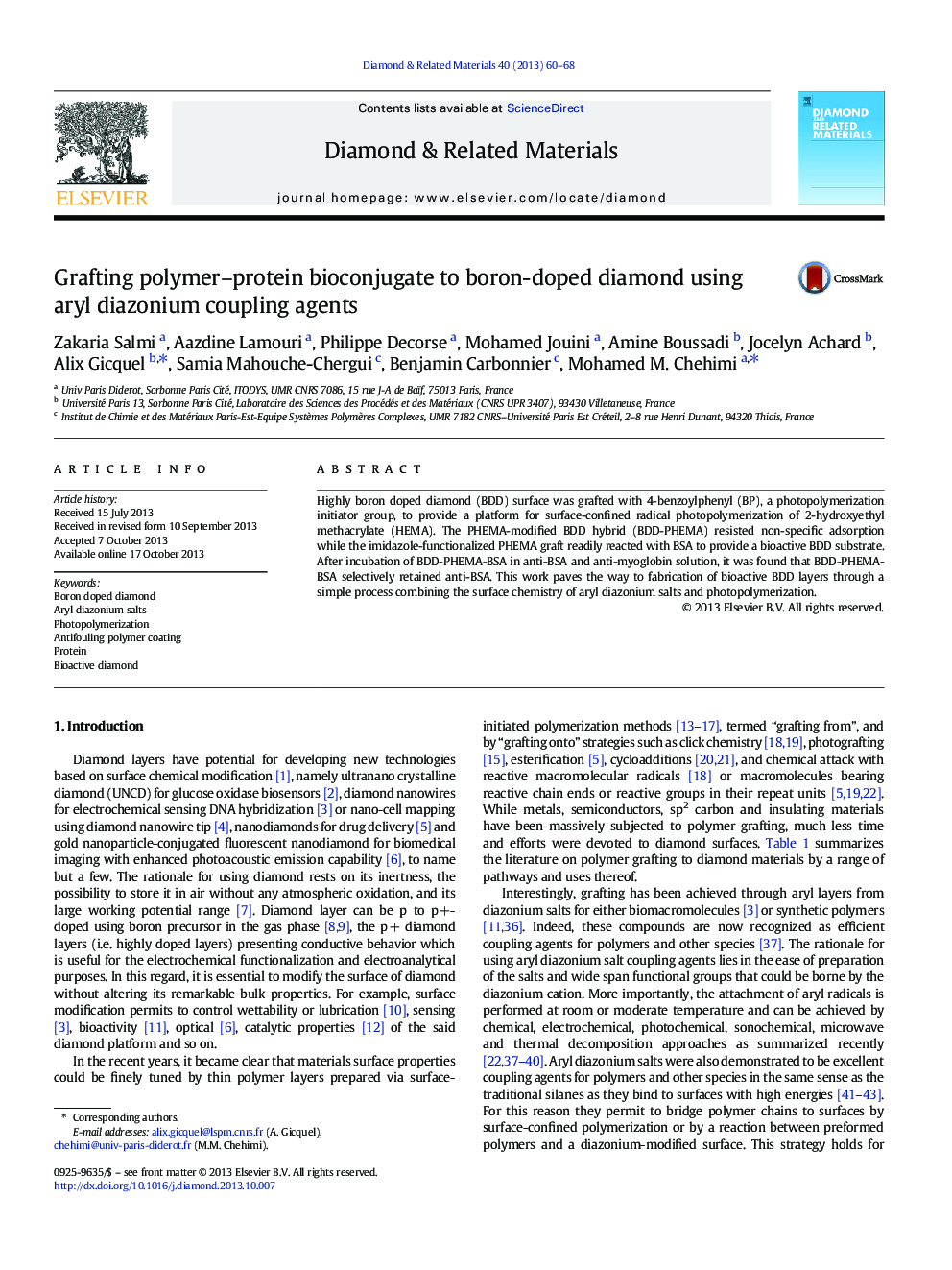| Article ID | Journal | Published Year | Pages | File Type |
|---|---|---|---|---|
| 702156 | Diamond and Related Materials | 2013 | 9 Pages |
•Aryl layers from diazonium salts initiate photopolymerization of HEMA at BDD surface.•BDD-PHEMA hybrids resist non-specific protein adsorption.•BSA-activated BDD-PHEMA hybrids selectively recognize anti-BSA over anti-myoglobin.•Aryl diazonium salts are versatile and trendy compounds for making bioactive BDD.
Highly boron doped diamond (BDD) surface was grafted with 4-benzoylphenyl (BP), a photopolymerization initiator group, to provide a platform for surface-confined radical photopolymerization of 2-hydroxyethyl methacrylate (HEMA). The PHEMA-modified BDD hybrid (BDD-PHEMA) resisted non-specific adsorption while the imidazole-functionalized PHEMA graft readily reacted with BSA to provide a bioactive BDD substrate. After incubation of BDD-PHEMA-BSA in anti-BSA and anti-myoglobin solution, it was found that BDD-PHEMA-BSA selectively retained anti-BSA. This work paves the way to fabrication of bioactive BDD layers through a simple process combining the surface chemistry of aryl diazonium salts and photopolymerization.
Graphical abstractFigure optionsDownload full-size imageDownload as PowerPoint slide
